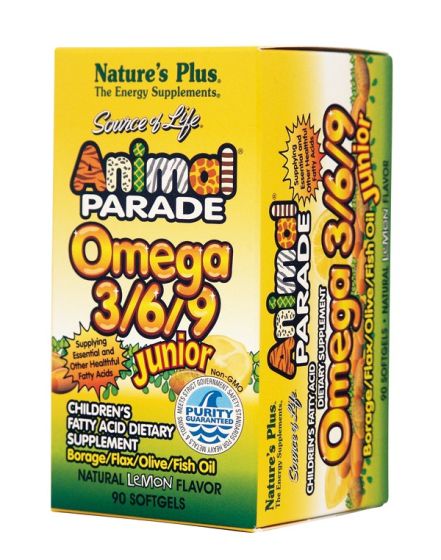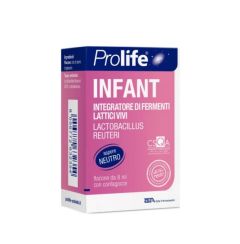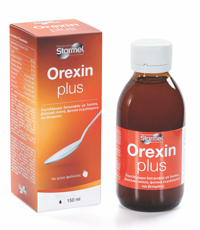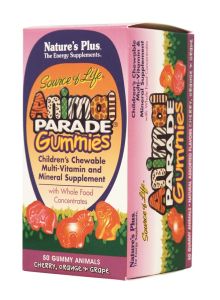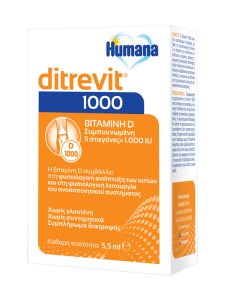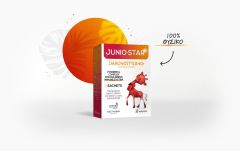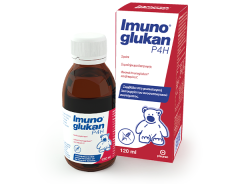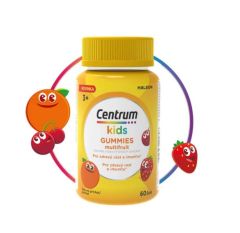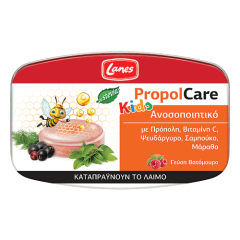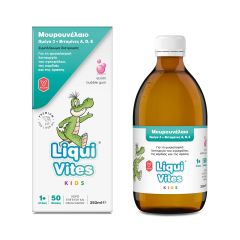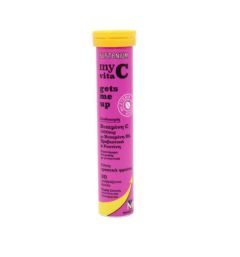Nature's Plus Animal Parade Omega 3/6/9 junior 90softgels - balanced mixture of necessary and beneficial fatty acids
Nature's Plus Animal Parade Omega 3/6/9 junior 90softgels - balanced mixture of necessary and beneficial fatty acids
ingestible soft capsules containing a balanced mixture of necessary and beneficial fatty acids (EPA, DHA, GLA, ALA, linoleic acid, oleic acid) of superior quality and excellent purity (no residual toxic substances) fish oil, borage oil, linseed oil and extra virgin olive oil for excellent mental and physical development of children. With great lemon taste.
Normal Use: Two capsules once a day.
Fish oils and fatty fish such as salmon, tuna, sardines and mackerel are the best dietary sources of important fatty acids EPA and DHA.
Also, a number of vegetable oils, particularly linseed (flax seed oil) is rich in alpha linolenic acid, which is a structural component of cell membranes and can be converted in the body to EPA and DHA.
These great fatty acids of the omega-3 series have, inter alia, the following properties:
EPA and DHA
- It is particularly beneficial for cardiovascular health.
- Reduces the level of triglycerides, which is especially good for the heart, because, indeed, triglycerides pose a greater risk for heart disease than cholesterol. According to a recent study (Am J Clin Nutr, 2002, 76: 57-64) ipatoichthyelaia supplements containing EPA and DHA reduce triglycerides and blood pressure and make blood vessels more elastic.
- Reduce welding tendency of platelets, acting thus preventively against risk of heart attack and stroke.
- There are several indications that reduce the chances of sudden death in patients who have suffered heart attacks. Some researchers express the opinion that sufficient daily intake of less than 1000mg EPA + DHA to save 20 thousand in infarct.
- Relieves some symptoms of rheumatoid arthritis and ulcerative colitis and help prevent relapses in Crohn's disease. Treatment for these cases should last for at least 10 to 12 weeks.
- Studies in vitro and in animals have shown that reduce the formation of tumors, prevent tumor growth, enhancing apoptosis and programmed cell death and have anti-angeiogenitiki action.
So far only one preliminary study in humans has been made, which gave positive results in breast cancer. Naturally need for further studies to draw conclusions safer.
The EPA and DHA also help cancer patients to reduce or stop the loss of muscle mass, which is of particular importance to the nature of the disease.
- They can help significantly reduce hypertension, taken together with other appropriate additives, such as magnesium, potassium, CoQ10, as part of an antihypertensive diet.
- Due to their anti-inflammatory properties may reduce asthma attacks and protect heavy smokers from emphysema.
- They help prevent rejection of transplanted kidneys.
- There are signs that can help in cases of angina.
- In conjunction with the GLA (Omega-6 fatty acid) improves vitality and helps patients with chronic fatigue syndrome. Relative 3-month study gave positive results in 85% of cases. O same combination (at 1 EPA to 4 GLA) gave good results, both in stone formation limitation kidney, and limiting hypercalciuria (J Urol, 1993, 149: 253A).
- It seems that there is a link between omega-3 fatty acids and mental health in general and depression in particular, which is not surprising if we consider that 50% or more of our brain cells composed of adipocytes.
In their article in the American Journal of Clinical Nutrition by Joseph Hibbeln and Norman Salem National Institute of Health linked the increasing cases of depression over the last 100 years in North. America with continuously reduced taking Omega-3 during the same period .
The same scientists, moreover, found that residents of coastal areas where fish consumption is high, suffering from depression much less than the residents mainland, where fish consumption is low.
Low DHA levels have also been associated with senile dementia and Alzheimer, memory loss, and visual problems (the DHA concentration is high in the gray matter of the brain and retina).
In research on Alzheimer elderly than in Sweden were found to have low levels of DHA in the blood, while studies in Japan have shown a significant improvement of the symptoms of senile dementia in patients treated with DHA supplementation.
Finally, it is interesting recent study results, according to which babies whose nursing mothers had higher levels of omega-3, were calmer, have more peaceful sleep and were less sleepy immediately after waking (Amer J Clin Nutr, 2002, 76: 608-13).
- The EPA and DHA help to achieve better athletic performance, due to their anti-inflammatory activity and blood clotting reduction, resulting in better supply tissues with oxygen and nutrients.
Furthermore, according to some athletes testimonies and physiotherapists (mainly Denmark), omega 3, in combination with borage oil (omega-6), vitamins A, B-6, C, E, and selenium and zinc, are effective for recurrent inflammatory lesions of joints, known as "hand tennis" and "hand gkolfista".
The results are visible in 2-3 weeks, while the more severe cases require more time. - It seems to be effective against dysmenorrhea. In a study conducted with adolescents, they granted EPA, DHA and vitamin E. After two months the period pain decreased significantly (Amer J Obst Gyn, 1996, 174: 1335-1338).
- There are strong indications that both EPA and DHA, and omega-6 fatty acids (linoleic acid, GLA) help patients with multiple sclerosis, prolonging the periods of remission and reducing the number and crisis intensity (Neurology, 1984 , 34: 1441-5).
REMARKS
- Many of the studies that have been done to investigate the properties of EPA and DHA have been using high doses (greater than 2500 or more than 5000 mg). This in daily practice is not always easy.
The best solution would be, perhaps, the parallel increase in fish consumption (preferably fatty) or use linseed (flaxseed oil) or whole flax seeds.
The linseed oil is an excellent source of omega-3 fatty acids. Linseed oil can be used in salads, but never in cooking, why is destroyed by high temperatures. They should also always in dark bottles tightly closed, because oxidized very easily. Make sure you buy from firm to pay particular attention to the quality of its products. The airtight capsules (softgels), however, better protect linoleum.
- Products containing EPA and DHA should contain vitamin E to protect against oxidation. People who live in polluted environments or heavy smokers or have a poor diet (fast food, ready meals) is good to take these products with added Vitamin E or antioxidants products for protection of EPA and DHA from oxidation in the body. These people, anyway, generally need antioxidant protection.
- Cod liver oil contains valuable, but not high amounts of EPA & DHA. Increasing very taking to get larger amount of EPA and DHA in danger from the toxicity of vitamins A and D, which are contained in large quantity in cod liver oil, not eliminated in the urine (it is fat soluble) and is toxic in high doses.
CONTRAINDICATIONS - PROFYLAXEIS
The EPA and DHA and alpha linolenic acid have no toxicity.
Because of their antithrombotic properties should be used with caution in hemophiliacs and those receiving anticoagulants, and stopped before an operation.
Children who have frequent nosebleeds should make limited consumption of cod liver oil or other fish oils.
The group of omega-6 fatty acids also has great importance for the proper functioning of our body. Two of the group acids are important: Linoleic acid, which is necessary - so it can not be synthesized in our bodies and must take it with food - and Gamma Linolenic Acid (Gamma Linolenic Acid / GLA), the which is of therapeutic value.
It should be noted that, while linoleic acid is so important that the great shortage would cause the death of our cells, however, and excessive consumption can cause health problems.
Indeed linoleic acid, having certain inflammatory properties, compete for the same enzyme-converter with alpha linolenic acid having anti-inflammatory properties (the first may be converted in the body into omega-6 and the second in omega-3 fatty acids) .
Thus an overuse of linoleic acid can cause deficiency symptoms of EPA and DHA, if our diet is poor in these precious fatty acids and our body based on their composition in alpha linolenic acid.
According to estimates of specialists, the ratio of omega-3 to omega-6 fatty acids in the diet of the inhabitants of the developed western countries is now the order of 1 to 24, and when man lived as hunter and collector nuts were in the range of 1: 5.
If we yp` mind that the human body remains essentially unchanged from prehistoric times until today, then this great nutritional reversal may explain the epidemic proportions that heart disease, cancer received today, diabetes and other degenerative - and not only - diseases.
Of course in this direction have contributed equally, if not more, and other eating twists: the large increase saturated fat consumption, food processing, and on this the stripping of vital components (vitamins, minerals, antioxidants, etc.) And sharp increase in refined carbohydrates (starches, simple sugars), while vertical reduction of fiber.
Fortunately for our country, the problem of over-consumption of linoleic acid does not seem to exist for the vast majority of the population, due to the extensive use of olive oil, containing predominantly oleic acid (omega-9).
Conversely, seed oils, which are widely consumed in other Western countries (especially sunflower oil, corn oil, soybean oil) is very rich in linoleic acid. Moreover, these oils are almost always refined, which means that it has destroyed almost all the valuable ingredients and contain residues of chemicals used in refining.
In conclusion, due to the great dispersion of linoleic acid in our food sources, coupled with the widespread use of oil, problems of both inadequate intake and excessive consumption does not seem to be something common in our country.
omega 9
The dominant form of dietary omega-9 fatty acid called oleic acid, abundant in olive oil, flaxseed oil and borage oil. Although not a true essential fatty acid, the need for omega-9 in human nutrition is undisputed. In fact, diets low in omega-9 associated with general poor health, and those high in this monounsaturated fatty acid associated with good health. Thus, although not really deemed necessary as the body can convert shorter fats omega-9, are often referred nevertheless as necessary. More exciting are the studies that show the benefits of the "Mediterranean diet" health, which is considered responsible for optimal cardiovascular health of many European cultures. Despite the high intake of fatty acids, the peoples of the Mediterranean studied have a lower incidence of problems in their coronary arteries. Scientists believe that omega-9 fatty acids consumed is the key to their surprisingly good health. Oleic acid is about 29% of their daily caloric intake, as well as olive oil, base of the Mediterranean diet consists of 55-85% of oleic acid. Laboratory studies on animals show that the biochemical mechanism may involve inhibition of the inflammatory response. A review of epidemiological and randomized study concludes that, "In the context of a diet rich in oleic acid, poor in saturated fats and low in omega-6 fatty acids, dietary pattern featuring traditional Mediterranean diet, even small doses of omega -3 fatty acids can be highly protective. " The dosage is about 1 g of EPA and DHA in fish oil capsule or 2 g a-linolenic acid canola oil and margarine (Eur J Nutr, 2004, 43 (3): 140-7).

